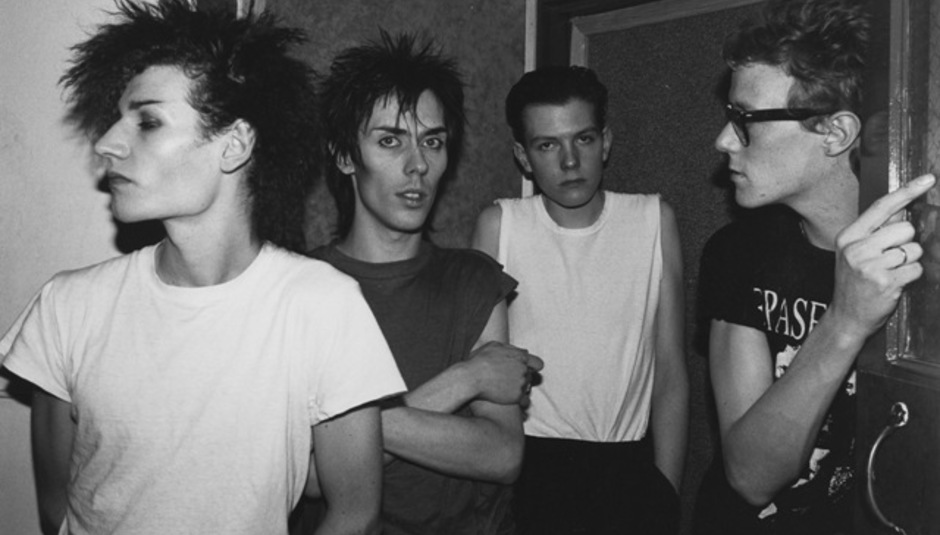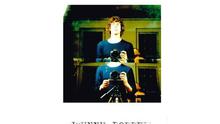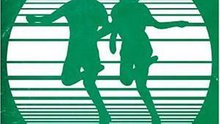The next time you find yourself swooning away to Dear Science or For Emma, Forever Ago, have a little pause for thought about the people who made those records and more besides possible for public consumption. The label 4AD, an offshoot of Beggars Group (nee Beggars Banquet) may be shortly entering its fifth decade of existence, but did you know that the first album to be released on its imprint was Bauhaus's In The Flat Field back in the Autumn of 1980? In fact, if it weren't for that record and its creators' subsequent - albeit short lived - success, it would be hard to envisage 4AD existing at all, particularly in these less than salubrious financial climates.
Having initially formed during the first wave of art infused post-punk in 1978, it was perhaps somewhat ironic that the Northampton-bred four-piece, heavily inspired by David Bowie, would have a brief flirtation with fame thanks to their interpretation of 'Ziggy Stardust', their biggest hit single which reached the Top 20 back in 1982. Delve between the cracks - not to mention occasionally derisive reception from the music press at the time - however and Bauhaus were actually one of the most influential, and dare I say it pivotal groups of their era, providing a launchpad for the movement subsequently known as goth ("Gothic as a brick" declared Sounds in its damning review for In The Flat Field), whilst listlessly fusing together abstract, ambient sounds with traditional guitar based melodies that could quite easily be perceived as a precursor to Warp Records artists like Seefeel and any number of experimental post rock-cum-metal developments.
Video:Bauhaus 'Bela Lugosi's Dead'
Musically coarse yet immediately distinctive, something they in no small part owned to vocalist (and part-time Maxell Tapes ad model) Peter Murphy. His fluent baritone owed as much to Christopher Lee's haunting dialect as the Thin White Duke. Over the course of four years, Bauhaus released a total of four studio albums and ten singles, eventually disintegrating onstage at Hammersmith Palais in 1983, literally days before the release of their (as then unknown to be) final album Burning From The Inside, a record which on closer inspection hints at the direction the band's musical alliance of Daniel Ash, Kevin Haskins and his brother David J would eventually take with their subsequent project as Love & Rockets. However, it would be fair to say that even despite the commercial success enjoyed towards the end of their existence, Bauhaus never quite mastered the exquisite temerity of their first two long players In The Flat Field and Mask.
There have been a couple of reformations, the most recent coming in 2005 courtesy of numerous endorsements from the likes of Marilyn Manson and Trent Reznor, which culminated in last year's highly anticipated but mostly disappointing Go Away White, their first collection of recordings in a quarter of a decade. Nevertheless, their legacy has survived and continued to grow, and this month sees the re-release of the aforementioned staples in their back catalogue as Omnibus editions, housed in elaborately packaged box sets featuring bonus CDs of many rare and unreleased tracks. For me, my everlasting memory of Bauhaus has to be seeing them perform on Top Of The Pops, Murphy and Ash resplendent with jet black hair, stark cheekbones and heavily made-up faces both stripped to the waist. "Those strange looking blokes on TV last night" were the talk of the school playground the next day, but for yours truly it was a first-hand account of art and music subverting the mainstream and getting it right, for three-and-a-half minutes at least.
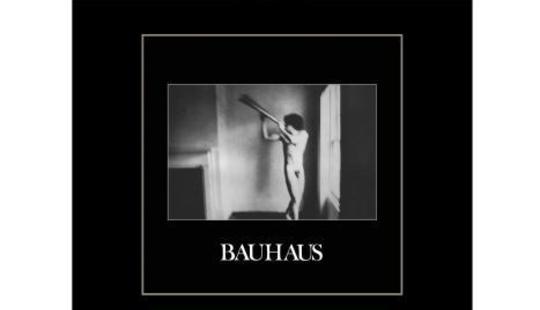
In The Flat Field(1980) may have been Bauhaus's first long player, but already their potential as ambitious, if slightly moody experimentalists was there for all to see in the shape of early singles 'Bela Lugosi's Dead', 'Dark Entries' and 'Terror Couple Kill Colonel', none of which found themselves included on the album but all included on the accompanying disk, complete with b-sides.
As for the album itself, it represented a landmark in an already quickly shifting musical environment, not least due to the band producing it themselves, virtually unheard of then, particularly for a group that had only been in existence for just over a year. From the opening rasp of Daniel Ash's harshly constructed guitar riff that precedes the submarine depth charge-led intro to 'Double Dare', through to the unsettling climax of 'Nerves' - which pre-dates the austere industrialised mood music of say Bark Psychosis or Mogwai by a good decade or so - In The Flat Field overwhelms in its diversity. The title track itself cascades in several cacophonous directions, Peter Murphy's cryptic lyrics eschewing both derision ("In the flat field I do get bored") and pleasure ("Replace with Piccadilly whores") often in the same sentence.
The fast paced intensity of In The Flat Field is relentless pretty much from start to finish, 'A God In An Alcove', initially released as a flexidisc with the late, lamented Flexipop! magazine and the erratic, disturbing nuance of 'St Vitus Dance' proving particularly menacing. 'Stigmata Martyr' meanwhile is still possibly one of the most blasphemous compositions ever committed to tape, Murphy crooning "Stigmata oh you sordid sight, stigmata in your splintered plight" against a halo of primal guitars and tribal beats.
While this record's influence on the impending goth scene cannot be underestimated or denied, to dismiss In The Flat Field as simply proto-goth would be doing a disservice both to its long-lasting appeal and the undoubted nous of its creators. As a timeless epitome of that era, it's a must-have for anyone with a remote interest in genuinely groundbreaking guitar music. Add the fact that this Omnibus edition also includes a bonus 16-song CD featuring all the singles and numerous outtakes recorded around the same time - the hauntingly stunning 'Rosegarden Funeral Of Sores' being worth the admission price alone - and you've a collection here that oozes quality and in summary is simply priceless. (9).
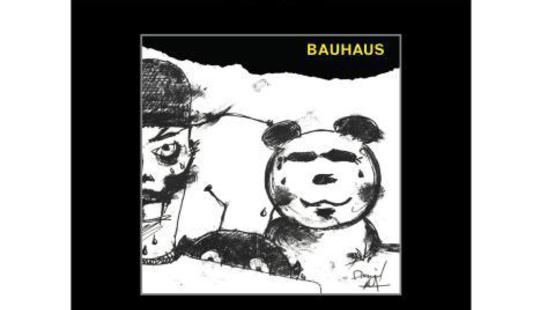
By the time they'd started writing and recording the material that would eventually form the basis of their second album Mask, Bauhaus' sound had already developed quite considerably. While the harsh, incisive edge of Daniel Ash's guitars and the Haskins brothers' savage backline still remained in tact, they'd also embraced the dislocated strains of groove-based dance music currently being employed by fellow scholars of futuristic punk Gang Of Four and Orange Juice. In an interview a few weeks prior to Mask's release, bassist David J Haskins announced "We have now left the underground, but we intend to go back for lost weekends every now and then". The record's primal schizophrenia indicates a band not merely caught between a rock and a hard place, but actually searching for that solid middle ground somewhere in-between.
Once again produced by the band, but this time engineered by esteemed studio boffin Mike Hedges, Mask was undoubtedly influenced by the likes of Iggy Pop's 'Nightclubbing' and Bowie's 'Boys Keep Swinging' as well as the other more inventive artists of the day such as Public Image Ltd and DAF. Lead single 'Kick In The Eye', with its careering funk-infused bassline and deft guitar hook resembled a close cousin of fellow genre-benders Japan's 'Quiet Life', while the mesmerising 'In Fear Of Fear' heralded a new dawn for Bauhaus, introducing a varied range of instrumentation such as keyboards and brass segments, albeit in a spectral rather than traditional manner.
If anything, Mask was a marked departure and completely devoid of any high levels of expectation. 'Hollow Hills' and its eerie, menacing background choir of ghostly voices complete with lyrics like "Baleful sounds and wild voices ignored, ill luck disaster the one reward" may have been dismissed as futile by certain sections of the media back then, but from the band's perspective - especially Peter Murphy - undoubtedly hinted that the 'Dark Entries' they'd infiltrated the previous year were now an important make-up of Bauhaus's psyche.
Not only had Bauhaus been spending time in the (death) disco 'Dancing', they'd also experimented with the dub technique more commonly associated with the likes of Lee Perry. The 'In Fear Of Dub' mix of 'In Fear Of Fear' that sits proudly at the forefront of the first bonus CD (not to mention the previously unreleased 'Waspie Dub') undoubtedly laid the foundations for a large part of what became their swansong, Burning From The Inside. Indeed one listen to that album's focal point, the extended mix of final single 'She's In Parties' shows how far beyond their peers they'd gone in perfecting the technique.
Nevertheless, Mask still makes uneasy listening as a complete body of work. 'Of Lilies And Remains' and the title track still sound like half-complete visions that didn't quite match up to the expectations when conceived in the rehearsal room. However, the Omnibus edition comes highly recommended, particularly for the two extra CDs of material that accompanies it. While the aforementioned CD2 contains a plethora of single mixes and out-takes (including a very early demo recording of 'Ziggy Stardust'), the third CD features a full hour's worth of live material taken from Hammersmith Palais in November 1981, and it is here where the previously confusing likes of 'The Passion Of Lovers' and 'Hair Of The Dog' actually begin to make more sense. (8).
Both Omnibus editions of In The Flat Field and Mask are available now from the Beggars Group Archive collection .

